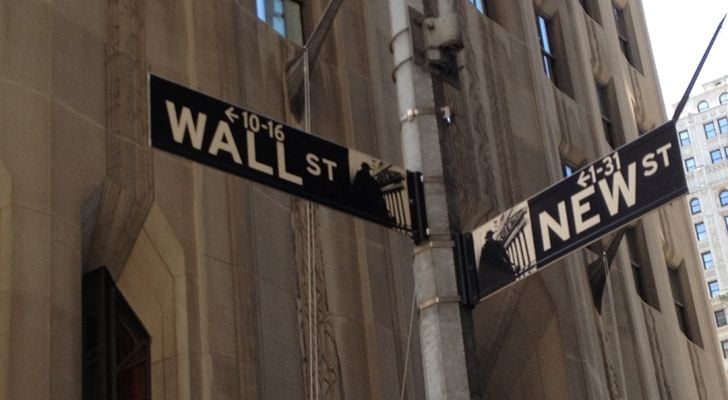In early February, the stock market was in selloff mode because inflation and rate hikes were pushing up fixed income yields, which was increasing borrowing costs and pressuring equity valuations.
But, after analyzing the long-term relationship between equity yields and Treasury yields, I discovered that, because of presently robust economic strength and tax cuts, Treasury yields would have to rise by an unrealistic amount in order to truly pressure equity yields. As such, I called the February selloff in the S&P 500 overdone, and I said the index could hit 3,000 by the end of 2018.
Fast forward a few months. Such inflation concerns have largely moved into the rear-view mirror. The S&P 500 has rallied 13% off its February lows. The index now sits at 2,934 and is on track to hit 3,000 by the end of the year.
That being said, there is a new boogeyman in the closet. That boogeyman is an inverted yield curve.
Just like the inflation concerns of early February, the recent inverted yield concerns seem overstated. History suggests that despite an inverted yield curve, the stock market should do just fine for the next 12-plus months.
Investment takeaway? Stay the course. For now.
Here’s a deeper look.
Why Inverted Yield Curves Are Bad
First, let’s briefly revisit the economics classroom.
Inverted yield curves happen when long-term Treasury yields converge on, and eventually go below, short-term Treasury yields. That is an abnormal circumstance which means demand for long-term Treasuries is unusually strong, and that investors believe interest rates will actually fall in the future, presumably due to weak economic activity. Thus, an inverted yield curve means that bond investors are predicting forthcoming economic weakness.
That is why an inverted yield curve has preceded every U.S. recession since 1960.
At the current time, the inverted yield curve is arising for several reasons. One, the Feds are hiking rates to offset rising inflation. Two, the Fed is unwinding its balance sheet at a fairly rapid rate. Three, trade tensions are rising. Four, we are ten years into the current economic expansion, and history says we are due for a pullback soon.
In other words, there are lot of reasons why investors are uncertain about long-term economic growth prospects, and those uncertainties are materializing at a time when the Fed is aggressively hiking rates. Net result? An inverted yield curve.
Why the Inverted Yield Curve Doesn’t Imply the End of the Bull Market
Having said all that, the inverted yield curve doesn’t necessarily imply the immediate end of the bull market.
In fact, over the past 30-plus years, while the inverted yield curve has been a harbinger of bad news, the stock market normally doesn’t top out until several months after the yield curve inverts. According to data from LPL research, the stock market normally peaks more than a year after the yield curve inverts. And, in that year, the stock market usually returns over 20%.
Perhaps more importantly, the three most recent yield inversions occurred in 1988, 1998 and 2006. In all three cases, the stock market didn’t peak until more than 19 months after the initial yield curve inversion. The average return during those 19 months was in excess of 30%.
I think we have a similar scenario on our hands today.
The S&P 500’s trailing earnings multiple is 22, implying an equity yield of 4.5%. The 10-Year Treasury Yield is right around 3.05%. Thus, the spread between equity and Treasury yields is in nearly 150 basis points. The long-term average spread is 100 basis points. From this perspective, equity valuations actually have quite a bit of wiggle room to move higher.
Moreover, trade risks seem to be more talk than action at the current moment. Earnings growth remains robust, and companies continue to outperform expectations. Sales growth is also robust. Global economic fundamentals remain strong and look to be strong into the foreseeable future.
In other words, while the inverted yield curve might mean troubled times ahead, those troubled times won’t show up for the next 12 to 18 months. During that stretch, markets could rally in excess of 20%.
Which Stocks to Buy Over the Next 12 Months
With the bull market still in tact, the big winners going forward should be the stocks that got us here in the first place.
Of course, there are the FAANGs. The fundamentals on Facebook (NASDAQ:FB), Amazon (NASDAQ:AMZN), Apple (NASDAQ:AAPL), Netflix (NASDAQ:NFLX), NVIDIA (NASDAQ:NVDA) and Google (NASDAQ:GOOG) all remain strong. The China tech giants should bounce back as trade concerns normalize. In that space, I particularly like Alibaba (NYSE:BABA), JD.Com (NASDAQ:JD), Baidu (NASDAQ:BIDU), Weibo (NASDAQ:WB), iQIYI (NASDAQ:IQ), and Huya (NASDAQ:HUYA). I also think big momentum stocks like Shopify (NYSE:SHOP), Adobe (NASDAQ:ADBE), and Salesforce (NYSE:CRM) will continue to do well.
The list goes on and on. But, the point is simple. Stay the course with your winning investments.
Bottom Line on the S&P 500
The inverted yield curve is coming. But, this isn’t the first boogeyman the stock market has seen this year. And, much like the last one, this boogeyman won’t inflict much damage on the market for at least the next 12 months.
As of this writing, Luke Lango was long FB, AMZN, AAPL, GOOG, BABA, JD, BIDU, WB, IQ, HUYA, SHOP and ADBE.

